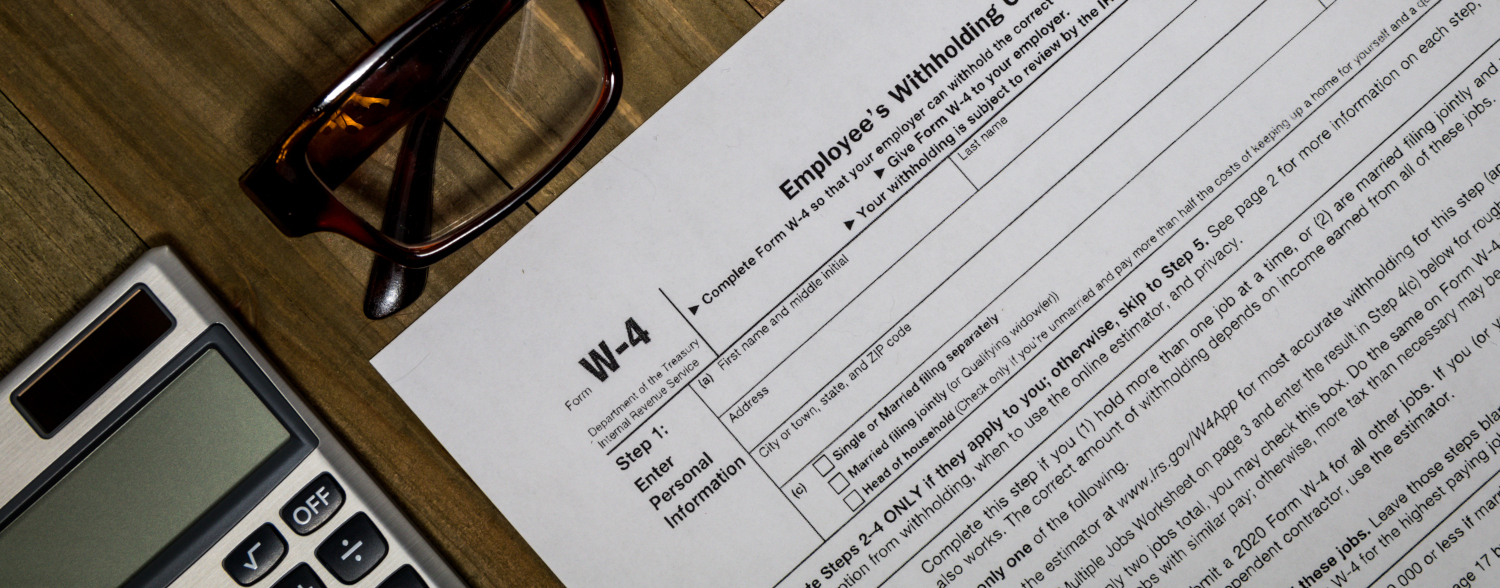
IRS Form W-4
By Rollie Dimos | Compensation & Payroll
IRS Form W-4, Employee’s Withholding Certificate, is designed to help employees and employers withhold the correct federal income tax from an employee’s wages. If too little tax is withheld, the employee will generally owe tax when filing their tax return (and may even owe a penalty). If too much tax is withheld, the employee may generally be owed a refund.
Employees will want to review their current withholdings and update Form W-4 when their personal or financial situation changes. The IRS has a tool to help employees review their withholdings called the Tax Withholding Estimator available at this link. In fact, the IRS is encouraging everyone to use the Tax Withholding Estimator to perform a ‘paycheck checkup.’ This will help you make sure you have the right amount of tax withheld from your paycheck.”
According to the IRS,
To help workers more effectively adjust their withholding, the Tax Withholding Estimator features a customized refund slider that allows users to choose the refund amount they prefer from a range of different refund amounts. The exact refund range shown is customized based on the tax information entered by that user.
Based on the refund amount selected, the Tax Withholding Estimator will give the worker specific recommendations on how to fill out their W-4. This feature allows users who seek either larger refunds at the end of the year or more money on their paychecks throughout the year to have just the right amount withheld to meet their preference.
There are several reasons why current employees may want to check their tax withholding:
- To help protect against having too little tax withheld and face an unexpected tax bill or penalty at tax time next year.
- To have less tax withheld up front, so you receive more in your paychecks and get a smaller refund at tax time.
An employee may also want to use the Tax Withholding Estimator tool if they expect to only work part of the year, have dividend or capital gain income, have self-employment income, or are subject to additional taxes such as the additional Medicare tax.
The IRS has provided some frequently asked questions and answers, which can be found at this link.
Here are few that can help employees and employers understand the form:
Q: My tax situation is simple. Do I have to complete all of the steps?
A: No. The form is divided into 5 steps. The only two steps required for all employees are Step 1, where you enter personal information like your name and filing status, and Step 5, where you sign the form. Complete Steps 2 - 4 only if they apply to you. Doing so will make your withholding more accurately match your liability.
Q: What happens if I only fill out Step 1 and then sign the form?
A: Your withholding will be computed based on your filing status's standard deduction and tax rates, with no other adjustments.
Q: When should I increase my withholding?
A: You should generally increase your withholding if:
- you hold more than one job at a time or you and your spouse both have jobs (Step 2) or
- you have income from sources other than jobs or self-employment that is not subject to withholding (Step 4(a)).
If you do not make adjustments to your withholding for these situations, you will very likely owe additional tax when filing your tax return, and you may owe penalties. For income from sources other than jobs, you can pay estimated tax instead of having extra withholding.
Q: When should I decrease my withholding?
A: You should generally decrease your withholding if:
- You are eligible for income tax credits such as the child tax credit or credit for other dependents (Step 3), and/or
- You are eligible for deductions other than the basic standard deduction, such as itemized deductions, the deduction for IRA contributions, or the deduction for student loan interest (Step 4(b)).
For additional information about this form, see the following IRS publication: About Form W-4, Employee's Withholding Certificate
 ASSEMBLIES OF GOD
ASSEMBLIES OF GOD